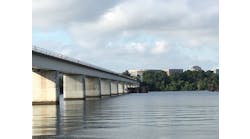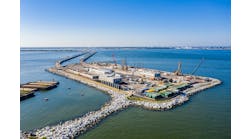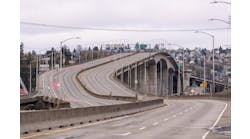When the Pennsylvania Turnpike was constructed in the late 1930s, its seven tunnels were considered an engineering marvel of the day. Indeed, the press heralded the toll road as the “Tunnel Highway” and the “Forget-the-Weather Highway.” So when it opened in October 1940, motorists were eager to experience the novelty of driving through the tunnels on America’s First Superhighway.
Today, as the tunnels approach 65 years of service, motorists hardly give a second thought to the tunnels’ origins. And the turnpike’s engineering staff tends to look at the tunnels in a much more realistic—and less sensational—light. Turnpike engineers are now working to ensure that the aging tunnels can safely continue to carry travelers through Pennsylvania’s scenic mountains.
Over the past 18 months, a Tunnel Management Committee—comprising engineers representing diverse disciplines within the Pennsylvania Turnpike Commission—has been plotting the rehabilitation, repair and modernization of the five tunnels along the Pennsylvania Turnpike. This unique committee will oversee the expenditure of over $117 million in the next decade (beyond the $5 million the commission spends annually for tunnel operations and upkeep) to help prolong and enhance the safety and functionality of the turnpike’s tunnels to bring the facilities up to date both structurally and technologically.
“It’s really a matter of taking these facilities from a 1960s standard and updating them to comply with modern standards,” said Ken Slippey, engineer project manager for the Pa. Turnpike. He added that the idea for the Tunnel Management Committee was an outgrowth of a long-range tunnel planning process that is now under way in the engineering department.
Light filling
The precursor to these projects was actually completed in 2000 at the turnpike’s Tuscarora Tunnel, located midway between Carlisle and Bedford on the Huntingdon-Franklin County line. Subsequent tunnel overhauls—very similar in scope—are now in the works at the back-to-back Blue Mountain and Kittatinny Mountain tunnels near Shippensburg, Pa., with a third comparable project on schedule for the Allegheny Tunnel, Somerset County, the turnpike’s longest active tube.
The $7 million Tuscarora Tunnel improvement project resulted in improved safety, maintenance, energy consumption and operating costs. The job featured installation of a new lighting system that was the first of its kind in Pennsylvania. More than 2,500 high-pressure sodium fixtures—spaced from 2.5 to 15 ft apart—were mounted on the walls of both tubes replacing an obsolete fluorescent lighting system.
The lighting system includes meters mounted atop exterior poles at the entrance to each tube. The meters monitor the luminescence on the face of the portal and automatically adjust the brightness of the tunnel lights to one of five levels. Previously, the brightness of the interior lights was set manually to one of three levels. The intent is to reduce the “black-hole effect,” the term for the harsh adjustment drivers’ eyes have to make as they move from bright to darker conditions. The fixtures are brightest and closest together at the entrances so that the adjustment is gradual.
The lighting system is more efficient, producing more light at the same energy consumption level as the fluorescent system. At certain levels, they produce six times as much light for the same power consumption. The new fixtures require less maintenance because they are sealed (and can be spray washed) and because the lamps have a longer life than the previous lamps.
Other aspects of the rehabilitation project included repairs to the overhead ceiling, new drain chases to address ongoing groundwater seepage, an upgrade of the tunnel’s electrical distribution system and four new diesel-powered generators to replace the old turbine style that constituted the backup power system.
The Turnpike Commission is now developing performance specifications to replace and upgrade tunnel lighting, electrical equipment and closed-circuit television systems inside its remaining three “West-East mainline” tunnels: Allegheny, Kittatinny and Blue Mountain. As with the Tuscarora Tunnel, systems at these three facilities have been well maintained but have been in service for decades; advances in technology will improve efficiency, reliability and customer safety. Also, like the Tuscarora model, new lighting will provide varying light levels, automatically adjusting to conditions outside the tubes to minimize the distractions and visual challenges drivers face upon entering.
Design specifications also call for replacement of closed-circuit television systems with new color cameras and monitors inside tunnel control rooms to provide more reliable service, superior video images and improved customer safety. All fire alarm systems also will be upgraded. The design-build project for the Allegheny Tunnel is out for bids and will be awarded in early spring. Estimated project cost for the mile-long tunnel is $7 million. The Blue Mountain and Kittatinny tunnel upgrades will go out for bids in April.
Also getting under way this summer will be an overhead ceiling rehabilitation and waterproofing project at the Tuscarora Tunnel. To help minimize disruption to traffic during construction, the $5 million project will represent the commission’s first foray (for this type of tunnel restoration) into pneumatically applied concrete. Coming in the next three to seven years will be other general rehabilitation work at all turnpike tunnels, beyond the lighting and electrical work now under way. This work will include new wall coverings, new ceiling slabs and rehab of the tunnel ventilation and drainage systems as well.


